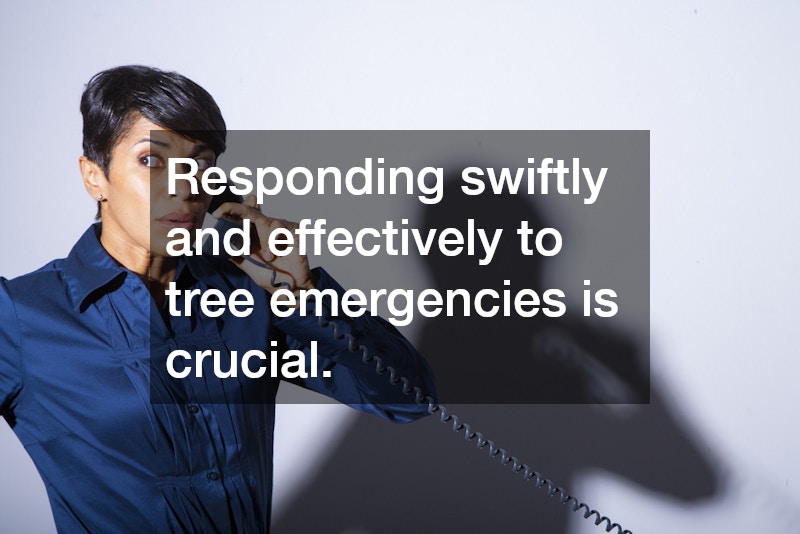As a property manager, one of your many responsibilities is ensuring the safety and well-being of the tenants and visitors within the properties you oversee. While routine tasks like maintenance and tenant relations are typically at the forefront of your duties, there are certain emergencies that require immediate attention—one of the most common being tree-related incidents. Trees, though often seen as beautiful additions to a landscape, can pose serious risks to property and people if they become damaged or diseased. Understanding what to do in a tree emergency and knowing when to call in emergency tree removal services can save you time, money, and stress.
1. Recognizing the Signs of a Tree in Trouble
Not all tree emergencies are obvious.
In fact, many trees show subtle signs of distress long before they become dangerous. Property managers need to be aware of these early warning signs to prevent more severe issues down the road. Some signs that a tree might need immediate attention include:
Leaning or Tilting: If a tree begins leaning noticeably in one direction, this could indicate that its root system is compromised, potentially making it unstable and dangerous.
Cracked or Splitting Trunk: Large cracks or splits in the trunk can lead to complete tree failure, especially if they extend into the heartwood, the central part of the tree.
Dead or Falling Branches: Branches that are dead or seem to be falling off easily may suggest that the tree is diseased or structurally unstable.
Excessive Fungus Growth: Fungal growth around the base of a tree or on its trunk can indicate rot, which weakens the tree.
Visible Root Damage: Exposed or damaged roots can destabilize a tree, making it more likely to fall in high winds or storms.
Property managers should have routine tree inspections scheduled, either through a professional arborist or a qualified landscaper, to spot these signs early and prevent an emergency from occurring.
2. The Risks of Tree Emergencies
Tree-related emergencies can happen without warning and come with significant risks. One of the primary dangers is that trees are large and heavy, and when they fall or lose limbs, they can cause extensive damage to buildings, vehicles, and fences. Additionally, fallen trees can obstruct roads, walkways, and other critical access points for tenants or emergency responders.
Trees that are near power lines are particularly hazardous. When a tree falls on a power line, it can cause outages, fires, or electrical hazards, placing tenants at risk. During stormy weather, the risk of trees falling is heightened, and proactive tree care is essential.
For property managers, dealing with a tree emergency can be overwhelming if not addressed promptly. That’s where emergency tree removal services come into play. Knowing when to contact professional tree removal services can prevent further damage and ensure the safety of everyone on the property.
3. When to Call for Emergency Tree Removal
In some situations, trees may be in immediate danger of falling or already have caused damage. If you notice that a tree poses a significant hazard to people, structures, or infrastructure, it’s crucial to act fast. Professional emergency tree removal services are equipped to safely and efficiently remove fallen or unstable trees, preventing further harm. Here are some situations when it’s time to call in the experts:
Storms and High Winds: High winds, heavy rain, and snow can all lead to fallen trees. If a tree is leaning or shows visible signs of damage after a storm, it may be a good idea to call for emergency tree removal services to prevent the tree from falling.
Tree Blockages: A fallen tree blocking access to roads, driveways, or fire escapes needs immediate attention. These obstructions could delay emergency services or prevent tenants from accessing essential services.
Increased Risk to Buildings or Structures: If a tree is leaning toward a building, vehicle, or other important structures, the risk of damage increases. If the tree shows signs of cracking or has already lost some branches, it’s time for emergency removal.
Diseased or Dying Trees: If a tree is dead or diseased and shows signs of instability, it should be removed before it poses a danger to people or property.
For property managers, responding swiftly and effectively to tree emergencies is crucial. By staying vigilant and proactive, scheduling routine tree inspections, and knowing when to call in emergency tree removal services, you can prevent damage and ensure the safety of your property and tenants. With professional help, you can handle tree emergencies confidently and avoid costly repairs or safety hazards.





